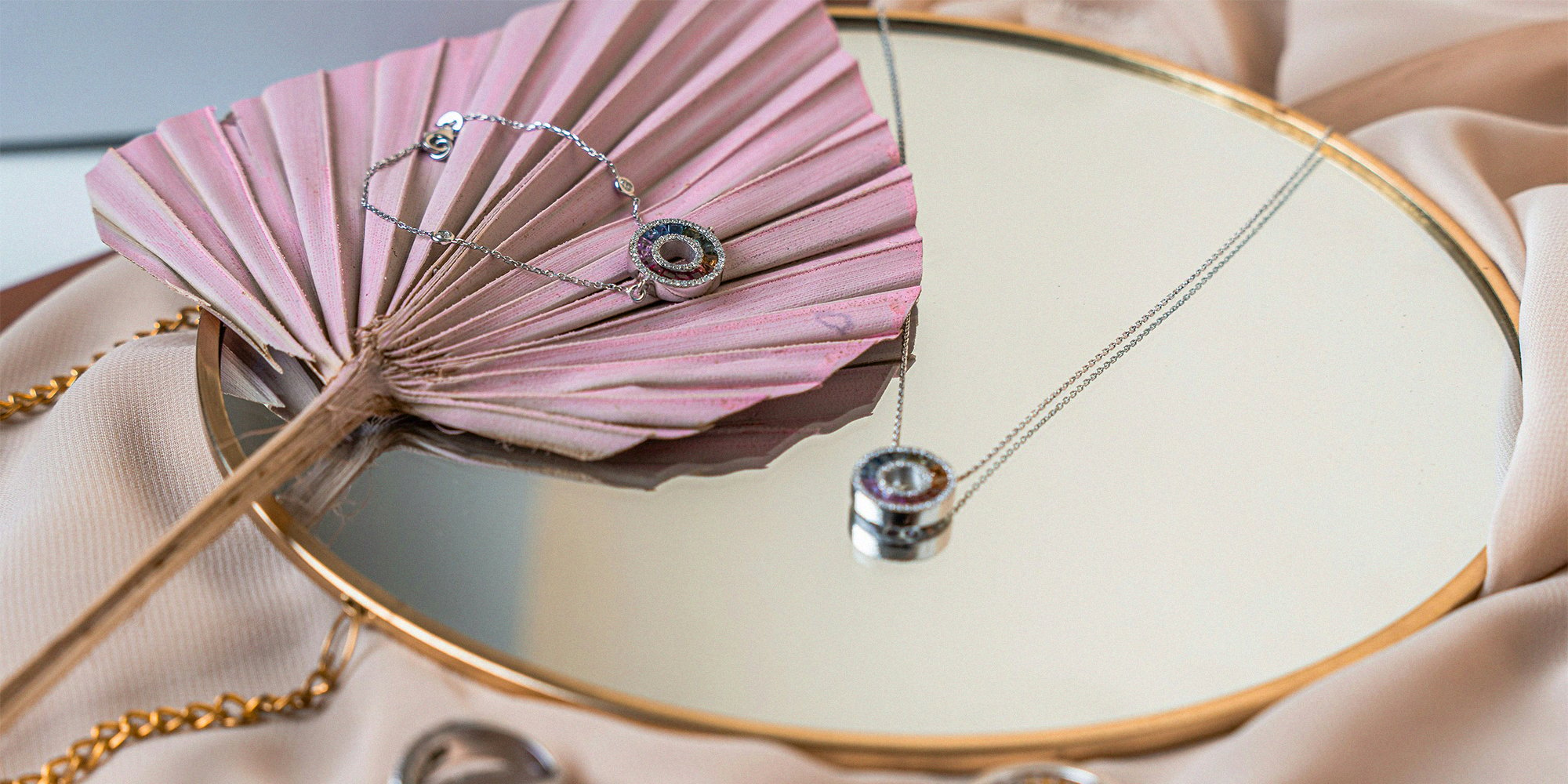What we learned about jewelry buying habits to take into 2025
Discover the new ways consumers are shopping for luxury jewelry and evolving aesthetics to note for 2025.

Before 2020, buying jewelry was an in-person experience: customers walked to the physical jewelry counter, picked up different pieces, and received a personal, in-person fitting.
At the time, 49% of jewelers with a website didn’t offer eCommerce transactions. But when the pandemic hit, and physical stores shuttered their doors, eCommerce jewelry sales got an instant shot in the arm—moving the eCommerce sales needle from $9 billion in 2019 to over $12 billion in 2020.
However, that massive boost in eCommerce sales is only part of what’s changing the landscape of jewelry commerce. Gen Z is also a factor — according to recent research from Boston Consulting Group, Gen Z shoppers are luxury-focused and keen to buy premium brands, including jewelry. Almost half of Gen Z consumers surveyed said they splurge once a month or more on products for themselves, which is a higher percentage than the 34% of Gen Xers and 43% of Millennials who reported doing the same.
In this post, we’ll explore how luxury jewelry brands navigate these new trends — the growth in eCommerce and a shifting consumer base — and what learnings you can take into 2025.
A changing customer base — and dupes galore
.jpg?width=1080&height=600&name=Blog_JewelryTrends23_Body1%20(1).jpg)
By 2030, Gen Z is expected to represent 30% of luxury purchases. Coupled with their unconventional taste in jewelry designs, this money is turning Gen Z customers into “agents of chaos,” writes Matter of Form. Gen Z looks for designs with “embellishment to the point of impracticality”. Gen Z is searching for jewelry like hardware, including heavy chains and bold cuffs, making jewelry brands scramble to keep up with Gen Z’s more avant-garde tastes. Brands like Bea Bongiasca have found success in catering to those tastes with jewelry characterized by funky shapes, oversaturated colors, and what Matter of Form calls “psychedelic” designs.
But Gen Z isn’t the only act in town. Mature shoppers over the age of 50, dubbed the ‘Silver Generation,’ are a growing source of luxury spending according to Business of Fashion.
Additionally, dupes and challenger brands are entering 2025’s luxury goods markets in a big way, shifting market share to innovative new players and brands willing to take design risks. Less established challenger brands, without as much reputation to risk, are worth watching as the market shifts.
Brands that adapt to Gen Z’s expansive preferences will likely see more sales success in the years ahead. Says Matter of Form: in the age of Gen Z, “[design] boredom is the number one killer of brands.”
Integration of Sustainable Practices
.jpg?width=1080&height=600&name=Blog_JewelryTrends23_Body2%20(2).jpg)
Gen Z customers aren’t self-indulgent — they’re philanthropic with their purchases. They care about climate change, ethical gem sourcing, the social impact of their purchases, and being conscientious about luxury spending, according to Matter of Form. What’s more, they care about sustainability too. In fact, 78% of all consumers (not just Gen Z) care about sustainability.
And luxury brands that are succeeding now are innovating their product designs to keep up with Gen Z’s preferences.
For example, Boucheron recently created a capsule collection made from Cofalit, a material made from “depolluted asbestos.” And the brand Aether is creating lab-grown diamonds derived from 100% atmospheric carbon.
Traveling Showrooms: The New Way to Sell in Person
.jpg?width=1080&height=600&name=Blog_JewelryTrends23_Body3%20(1).jpg)
Gen Z doesn’t mind a completely digital jewelry shopping experience. According to Vogue Business, this preference for online shopping even applies to a traditionally offline market: jewelry resale. Since the pandemic, we’ve seen several online jewelry resale platforms emerge. And digital channels keep growing — in fact, ECDB projects that online jewelry sales will reach 39.6% by 2028, a sharp increase from 8% in 2021.
Business of Fashion also reports that brands are taking their offerings on the road via “traveling showrooms.” Jewelry brand Sophie Bille Brahe already earns over half of its business from in-person purchases. Their strategy combines in-person selling with digital data: they’ll take their collection to cities like Los Angeles, reach out to customers who have shopped on their website before, and invite them to meet the brand team.
“I don’t think we would have … seen the same growth if we were on a shop floor,” the Business of Fashion quotes brand founder Sophie Bille Brahe. Their digital showcase of resale jewelry, however, functions in the same way—showing off resold jewelry in the digital realm.
There’s good news, too. It’s easy for brands to jump on the online jewelry-selling bandwagon. NuORDER offers users online showrooms where you can build a virtual shopping front that fits the needs of modern buyers.
Capitalizing on the 2025 Jewelry Market Trends
.jpg?width=1080&height=600&name=Blog_JewelryTrends23_Body4%20(1).jpg)
Gen Z customers will have an outsized impact on luxury jewelry purchases in 2025 and beyond. Learn more about how NuORDER can help you streamline online shopping experiences and support the interests of Gen Z buyers from our Kendra Scott case study.
Related articles
Get on the list
Wholesale tips and industry news you can’t miss, delivered weekly
